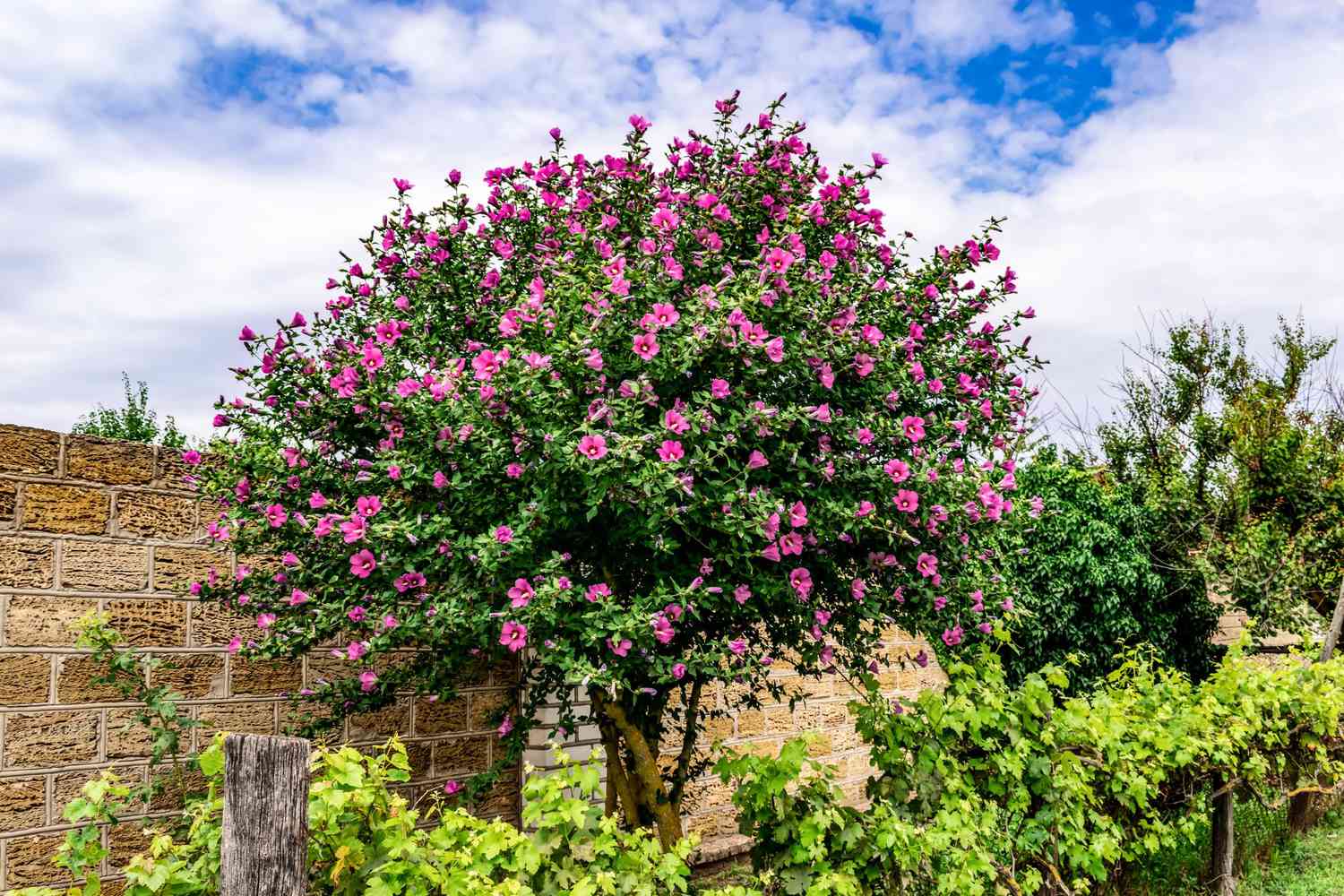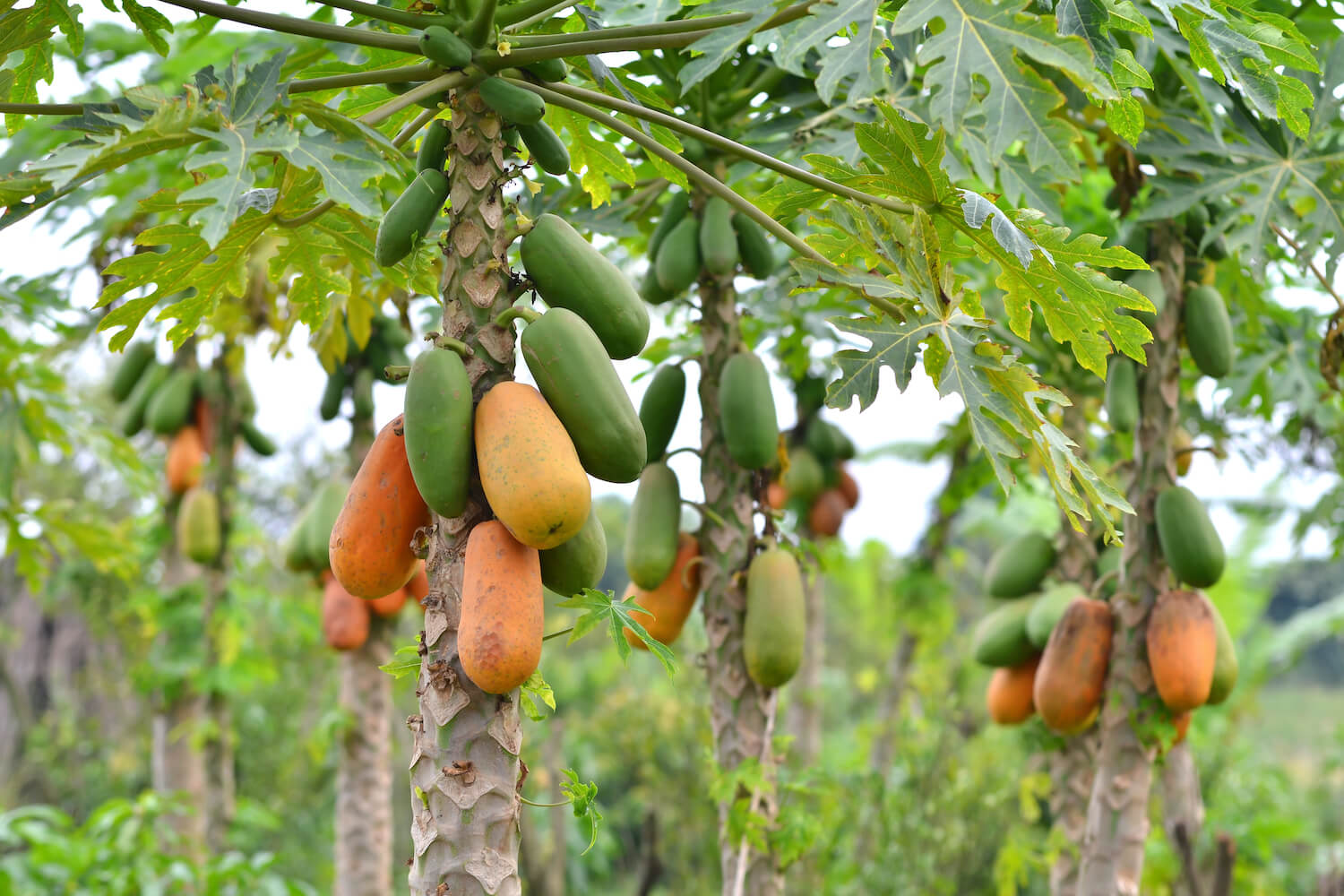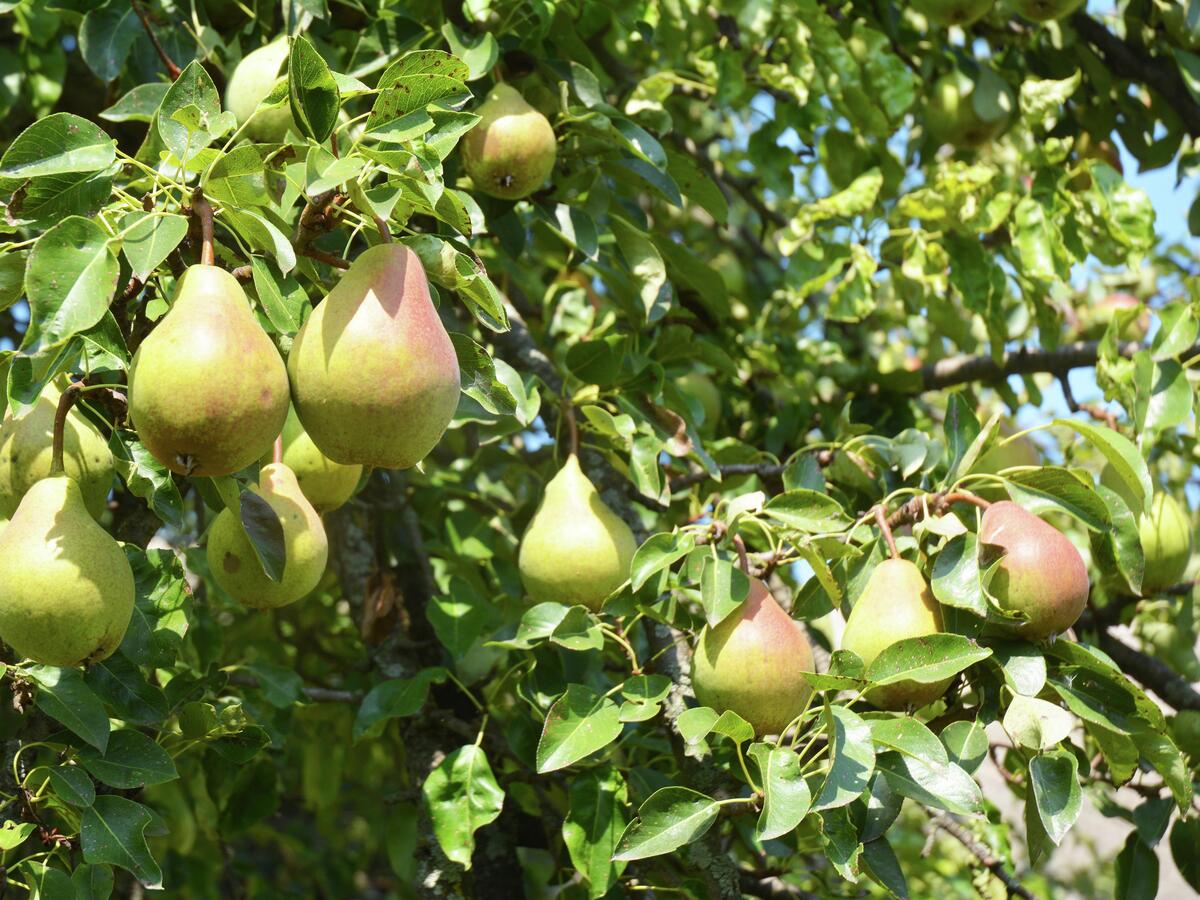Home>Gardening Techniques>Plant Care>How Big Do Ficus Trees Get


Plant Care
How Big Do Ficus Trees Get
Modified: January 22, 2024
Discover everything you need to know about plant care for ficus trees, including their maximum size and how to care for them properly.
(Many of the links in this article redirect to a specific reviewed product. Your purchase of these products through affiliate links helps to generate commission for Chicagolandgardening.com, at no extra cost. Learn more)
Table of Contents
Introduction
Welcome to the fascinating world of Ficus trees! If you’re a plant enthusiast or looking to add some greenery to your indoor or outdoor space, Ficus trees are a fantastic choice. These versatile and beautiful trees have a wide range of sizes and are known for their impressive growth potential. In this article, we will explore the factors that determine the size of Ficus trees and how to maintain them to the desired dimensions.
Ficus trees, scientifically known as Ficus benjamina, are native to tropical and subtropical regions. Revered for their luscious foliage and graceful appearance, these trees have become popular as houseplants and landscape features. One of the intriguing aspects of Ficus trees is their ability to adapt to various environments. Whether you have limited space indoors or a spacious garden, there’s a Ficus tree that can suit your needs.
Understanding the characteristics and growth habits of Ficus trees is essential when it comes to determining the right size and managing their growth. These trees have an expansive root system and can develop both aerial and surface roots. This unique rooting behavior allows Ficus trees to spread and establish a robust foundation, which in turn influences their overall size.
The ultimate size of a Ficus tree is influenced by several factors, including its species, environmental conditions, and available space for growth. While some Ficus trees can reach towering heights, others are more compact and suitable for smaller spaces. It is important to choose the right variety based on the available space and the desired aesthetic effect.
In the following sections, we will delve deeper into the specific factors that influence the size of Ficus trees. We will explore the average height and spread of these trees, the different varieties you can choose from, and discuss maintenance techniques to control their size. Additionally, we will touch upon the potential issues that can arise when Ficus trees become too large. So, let’s embark on this botanical journey and discover everything you need to know about the size of Ficus trees!
Characteristics of Ficus Trees
Ficus trees possess a unique set of characteristics that contribute to their overall size and growth patterns. Understanding these traits is crucial for effectively managing their size and ensuring optimal growth. Here are some key characteristics of Ficus trees:
1. Leaf Size and Shape: Ficus trees typically have glossy, leathery leaves that range in size and shape depending on the species. Leaves can be oval, lanceolate, or even deeply lobed, adding to the aesthetic appeal of the tree.
2. Growth Habit: Ficus trees exhibit a variety of growth habits, including upright, weeping, or cascading. Some varieties have a more compact and bushy growth habit, while others develop a more open and spreading canopy.
3. Rooting Behavior: Ficus trees are known for their intricate root system. They can form aerial roots that grow down from branches and eventually establish themselves in the soil. This characteristic allows Ficus trees to develop a strong foundation and contributes to their overall size and stability.
4. Tolerance to Pruning: Ficus trees are relatively tolerant of pruning, which makes them suitable for shaping and controlling their size. However, it is important to note that specific pruning techniques and timing should be followed to avoid stress or damage to the tree.
5. Light Requirements: Ficus trees thrive in bright, indirect light conditions. They can tolerate some shade but may experience slowed growth or reduced foliage if exposed to low light for prolonged periods. Providing the right amount of light is crucial for optimal growth and development.
6. Environmental Adaptability: Ficus trees have evolved to adapt to a variety of environmental conditions. They can tolerate different temperatures and humidity levels, although specific species may have preferred ranges. Ensuring that a Ficus tree is placed in suitable environmental conditions promotes healthy growth.
Ficus trees are renowned for their ability to enhance indoor and outdoor spaces with their lush foliage and graceful appearance. By understanding the unique characteristics of Ficus trees, you can make informed decisions about their care and create an environment that allows them to thrive.
Factors Affecting Ficus Tree Size
The size of a Ficus tree is influenced by various factors, each playing a significant role in determining its ultimate height and spread. Understanding these factors will help you create an environment that promotes healthy growth and manage the size of your Ficus tree. Here are some key factors that affect the size of Ficus trees:
1. Species and Variety: Different species and varieties of Ficus trees have distinct growth habits and potential sizes. Some species, like the Ficus lyrata (Fiddle Leaf Fig), can grow tall and reach heights of up to 10-15 feet indoors. Other varieties, such as the Ficus microcarpa (Indian Laurel), have a more compact growth habit, making them suitable for smaller spaces.
2. Environmental Conditions: The environment in which a Ficus tree is placed directly affects its growth and size. Factors such as light, temperature, humidity, and airflow play a crucial role. Ficus trees thrive in bright, indirect light conditions, with temperatures ranging between 60 to 75°F (15-24°C), and moderate humidity levels.
3. Available Space: The available space for growth is an essential factor in determining the size of a Ficus tree. Indoor Ficus trees grown in pots will have limited space for their roots to expand, which can restrict their overall growth. On the other hand, Ficus trees planted in larger outdoor spaces have the potential to grow to their maximum size.
4. Pruning and Maintenance: Proper pruning techniques can help control the size of a Ficus tree. Regular pruning encourages branching and helps maintain a desired shape, preventing the tree from becoming too leggy or overgrown. By selectively removing certain branches, you can manage the overall size and form of the tree.
5. Nutrient Availability: The availability of essential nutrients in the soil affects the growth and size of Ficus trees. Providing a balanced fertilizer with the appropriate NPK ratio and micronutrients ensures that the tree has the necessary resources to grow to its full potential. However, it is important not to over-fertilize, as this can lead to excessive growth and potential issues.
6. Watering Practices: Proper watering is crucial for the health and size of Ficus trees. Overwatering can lead to root rot and hinder growth, while underwatering can cause stress and stunt the tree’s development. Maintaining a consistent watering schedule and ensuring adequate drainage is essential.
By taking these factors into consideration and providing the right conditions, you can manage the size of your Ficus tree effectively and create an environment that supports its healthy growth.
Average Height and Spread of Ficus Trees
The height and spread of Ficus trees can vary significantly depending on the species and variety, as well as the environmental conditions in which they are grown. Here are some average height and spread ranges for commonly grown Ficus trees:
1. Ficus Benjamina: Also known as the Weeping Fig, Ficus benjamina is a popular indoor plant that can reach an average height of 3 to 10 feet (0.9 to 3 meters) when grown in pots. In its natural outdoor habitat, it can reach heights of up to 60 feet (18 meters) or more. The spread of Ficus benjamina can range from 2 to 10 feet (0.6 to 3 meters).
2. Ficus Lyrata: Commonly known as the Fiddle Leaf Fig, Ficus lyrata is an indoor plant prized for its large, violin-shaped leaves. It can grow to an average height of 6 to 10 feet (1.8 to 3 meters) when grown in pots, with some specimens reaching up to 15 feet (4.5 meters) or more. The spread of Ficus lyrata is usually around 2 to 5 feet (0.6 to 1.5 meters).
3. Ficus Microcarpa: Also referred to as the Indian Laurel or Chinese Banyan, Ficus microcarpa is a versatile tree that can be grown both indoors and outdoors. When grown indoors, it usually reaches a height of 2 to 6 feet (0.6 to 1.8 meters). Outdoors, it can grow up to 40 feet (12 meters) tall with a spread of 30 to 60 feet (9 to 18 meters) or more.
4. Ficus Elastica: The Rubber Tree or Rubber Fig, Ficus elastica, is a popular houseplant known for its attractive, glossy leaves. It can reach an average height of 6 to 10 feet (1.8 to 3 meters) when grown indoors, but in its native habitat, it can grow up to 100 feet (30 meters) tall. The spread of Ficus elastica is typically around 2 to 6 feet (0.6 to 1.8 meters).
5. Ficus Retusa: Also known as the Cuban Laurel or Indian Laurel Fig, Ficus retusa is a popular choice for bonsai enthusiasts. It can grow up to 40 feet (12 meters) tall when grown in the ground, but when trained as bonsai, it remains much smaller, typically ranging from 1 to 3 feet (0.3 to 0.9 meters) in height with a proportional spread.
Remember that these are averages, and the actual size of a Ficus tree can vary based on factors such as care, environment, and genetics. By understanding the typical height and spread ranges of different Ficus tree varieties, you can better plan for their growth and ensure that they fit within your desired space and aesthetic vision.
Varieties of Ficus Trees and Their Sizes
Ficus trees come in a wide variety of species, each with its own unique growth habits, sizes, and characteristics. Whether you’re looking for a compact indoor plant or a towering outdoor tree, there is a Ficus variety to suit every preference. Here are a few popular Ficus tree varieties and their typical sizes:
1. Ficus lyrata (Fiddle Leaf Fig): This iconic Ficus variety is prized for its large, violin-shaped leaves. When grown indoors, Ficus lyrata can reach an average height of 6 to 10 feet (1.8 to 3 meters) in containers, with some specimens growing up to 15 feet (4.5 meters) or more when provided with suitable conditions. The spread of Ficus lyrata is typically around 2 to 5 feet (0.6 to 1.5 meters).
2. Ficus benjamina (Weeping Fig): The Weeping Fig is one of the most popular Ficus trees for indoor cultivation. When grown in pots, Ficus benjamina reaches an average height of 3 to 10 feet (0.9 to 3 meters), with larger specimens in optimal conditions exceeding 10 feet. In its natural outdoor habitat, this variety can grow to towering heights of up to 60 feet (18 meters) or more, with a spread ranging from 2 to 10 feet (0.6 to 3 meters).
3. Ficus elastica (Rubber Tree): The Rubber Tree is an attractive indoor plant known for its glossy, large leaves. When grown indoors, Ficus elastica can reach an average height of 6 to 10 feet (1.8 to 3 meters). In its native habitat, it can grow up to 100 feet (30 meters) tall. The spread of Ficus elastica is typically around 2 to 6 feet (0.6 to 1.8 meters).
4. Ficus microcarpa (Indian Laurel): This versatile Ficus variety is suitable for both indoor and outdoor cultivation. When grown indoors, Ficus microcarpa usually reaches a height of 2 to 6 feet (0.6 to 1.8 meters). In the outdoors, it can grow up to 40 feet (12 meters) tall with a spread of 30 to 60 feet (9 to 18 meters) or more, depending on the growing conditions and available space.
5. Ficus panda (Panda Plant): The Panda Plant is a compact Ficus variety that makes an excellent choice for indoor gardening. It typically grows to a height of 1 to 3 feet (0.3 to 0.9 meters) and has a spread of around 1 to 2 feet (0.3 to 0.6 meters). This small size makes it ideal for use as a tabletop or desktop plant.
These are just a handful of the numerous Ficus tree varieties available in the market. When selecting a Ficus tree, consider your space limitations, desired size, and care requirements to ensure a perfect fit for your indoor or outdoor garden.
Maintenance and Pruning Techniques for Controlling Ficus Tree Size
Controlling the size of a Ficus tree is essential to ensure it fits within your desired space and aesthetic vision. Proper maintenance and pruning techniques are key to achieving this goal. Here are some tips for maintaining and pruning Ficus trees to control their size:
1. Regular Pruning: Regular pruning helps control the size and shape of your Ficus tree. Trim back any branches that have become too long or are growing in undesired directions. Use clean and sharp pruning tools to make precise cuts just above the node or branch collar. Be mindful not to remove more than 25% of the tree’s foliage at one time, as this can stress the plant.
2. Crown Thinning: To control the overall size and density of the tree, consider crown thinning. Remove some of the inner branches and foliage to improve air circulation, reduce overcrowding, and allow more light to reach the lower parts of the tree. This technique helps manage the size while maintaining a healthy and balanced appearance.
3. Selective Branch Removal: Identify any branches that are growing too vigorously or are interfering with the desired shape and size of the tree. Prune these branches back to a healthy and suitable length. By selectively removing specific branches, you can redirect growth and manage the overall size of the Ficus tree.
4. Root Pruning: In the case of Ficus trees grown in containers, periodic root pruning is necessary to control the tree’s size and prevent it from becoming pot-bound. Gently remove the tree from its pot, trim back some of the outer roots, and repot it with fresh soil. This process helps maintain a healthy root system and prevents the tree from outgrowing its container.
5. Training Techniques: If you desire a particular shape or size for your Ficus tree, consider using training techniques such as pruning and staking. By carefully selecting the branches to encourage growth and shaping the tree accordingly, you can guide its size and form to your desired specifications.
6. Maintenance Practices: Providing optimal care and maintenance practices contributes to a healthy and appropriately sized Ficus tree. Ensure the tree receives proper watering, adequate light, and regular fertilization. Regularly monitor the tree for any signs of pests, diseases, or nutrient deficiencies. Address any problems promptly to prevent them from impacting the tree’s growth and size.
Remember, it is important to prune and maintain Ficus trees in a way that promotes their health and vitality. Seek guidance from gardening professionals or arborists if you are unsure about specific pruning techniques or require assistance in managing the size of your Ficus tree.
Potential Issues with Overly Large Ficus Trees
While having a large and impressive Ficus tree can be visually stunning, there are potential issues that can arise when these trees become overly large and outgrow their intended space. It’s important to be aware of these issues to prevent any negative impacts. Here are some potential issues with overly large Ficus trees:
1. Structural Instability: As Ficus trees grow larger, their weight and size increase, which can result in structural instability. The branches and trunk may become weak, leading to an increased risk of branch breakage or even toppling of the entire tree. This can pose a safety hazard to people and property around the tree.
2. Lack of Adequate Light: Overly large Ficus trees can create a dense canopy that restricts the amount of light reaching the lower levels of the tree and the surrounding plants. This can lead to poor growth and development of the undergrowth or other plants in the vicinity.
3. Restricted Space: Ficus trees that outgrow their intended space can cause problems by encroaching on structures such as buildings, fences, or power lines. The root system may also disrupt pathways, sidewalks, and underground utilities. Lack of adequate space can also hinder the tree’s own growth and development.
4. Increased Maintenance Requirements: Larger Ficus trees often require more maintenance. This can include regular pruning, crown thinning, and monitoring for structural issues. If not properly maintained, these trees can become unruly, untidy, and challenging to manage.
5. Excessive Water and Nutrient Demands: As Ficus trees grow larger, their water and nutrient demands increase. If not adequately supplied, the tree may suffer from dehydration, nutrient deficiencies, or impaired growth. Meeting the increased requirements of large Ficus trees may require additional time, effort, and resources.
6. Difficulty in Transplanting: Overly large Ficus trees are often challenging to transplant due to their size and established root systems. If the tree needs to be relocated or there is a need for changes in the landscape, moving a large tree can be costly, time-consuming, and may result in transplant shock or even death of the tree.
It’s essential to monitor the size and growth of Ficus trees carefully and take proactive measures to manage their size before these issues arise. Regular pruning, proper spacing, and adequate care can help prevent these potential problems, ensuring that your Ficus tree remains a beautiful and harmonious addition to your indoor or outdoor space.
Conclusion
Ficus trees are renowned for their beauty, versatility, and impressive growth potential. Understanding the factors that influence their size and adopting proper maintenance techniques is crucial for successfully managing these trees in indoor and outdoor settings.
By considering the characteristics of Ficus trees, such as leaf size and shape, rooting behavior, and growth habits, you can make informed decisions about which variety suits your space and desired aesthetic. Factors like environmental conditions and available space play a significant role in determining the size of your Ficus tree.
Regular pruning and maintenance are essential for controlling the size and shape of Ficus trees. Techniques such as crown thinning, selective branch removal, and root pruning can help manage growth and maintain structural stability. Adequate care, including appropriate watering, lighting, and nutrient levels, is also vital for the health and well-being of these trees.
Overly large Ficus trees can present several potential issues, such as structural instability, restricted space, reduced light availability, increased maintenance needs, and difficulty in transplanting. It is crucial to address these issues proactively and prevent them from arising by managing the tree’s size and growth properly.
In conclusion, by understanding the characteristics of Ficus trees, implementing proper maintenance and pruning techniques, and considering the potential challenges of overly large trees, you can cultivate healthy and vibrant Ficus trees that beautifully enhance your indoor or outdoor space. With the right care and attention, your Ficus tree will thrive and become a stunning centerpiece of your botanical collection or landscape.









